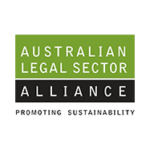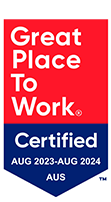APRA releases report on insurance claims trends

On 10 May 2023, the Australian Prudential Regulation Authority (APRA) released a report (Report) on the claims trends and policies data that APRA collects in its annual National Claims and Policies Database (NCPD).[1]
The Report explores major drivers of claims costs and affordability of Public and Product Liability (PPL), Professional Indemnity (PI) and Directors and Officers (D&O) insurance, with the key points being:
Public and Product Liability
Premiums have increased by about 30% from an average of $720m p.a. (over 2009 to 2013) to an average of $940m p.a. (over 2014 to 2021). The increase in cost was mainly driven by large public liability claims (being claims above $500,000). In addition, as premium increases started to occur in 2017 in response to worsening claims experience, the proportion of policies with a larger deductible began to increase.
The incurred cost increases in public liability insurance were observed for bodily injury claims and property damage claims.
For bodily injury claims, the key causes of loss driving the cost increases were worker claims, comprising 11% of total bodily injury finalised claim costs. The average size of finalised worker claims is around $260,000 (more than double the $120,000 average size of other bodily injury claims).
For property damage claims, the main industries driving cost increases were faulty products/workmanship (increase of $14m, representing a 34% rise), impact falls (increase of $11m, representing a 51% rise), and other financial/non-financial loss environmental/substance (increase of $10m, representing a 48% rise).
Professional Indemnity
Professional indemnity gross written premium grew from 2015 to 2021 by 75%, consisting of a 27% increase in average premiums and a 38% increase in risk counts.
The premium increases occurred for the following industry and occupation groups:
- insurance industry (especially insurance brokers – average premium increase of 301%);
- engineering (especially structural and geotechnical engineers – average premium increase of 41%
- surveying industry (impacted by fire-safety/building cladding related claims – average premium increase of 201%);
- real estate industry (especially valuers and property managers – average premium increase of 143%);
- general consultants (especially management and technical consultants – average premium increase of 99%); and
- finance industry (especially accountants, financial planners and brokers – average premium increase of 59%).
The total cost of finalised claims increased by around 35% from an average of $310m per annum over 2009 to 2013, to an average of $420m per annum over 2014 to 2021. This was largely due to a 60% increase in large claim costs, driven by an increase in the volume of large claims (being over $1m).
Directors and Officers
Large claims (above $1m), likely relating to class actions, have tripled from 11 class actions p.a. (over 2009 to 2015) to 31 p.a. (over 2019 to 2021). These large claims have driven a 53% increase in D&O finalised costs in 2016 (from an average of $110m p.a. to $170m p.a.). Finalised costs increased again in 2020 by 78% to an average of $300m p.a.
Actions resulting from the Royal Commission into Misconduct in Banking, Superannuation and Financial Services Industry (Banking Commission) have led to higher claims costs and increased in loss ratio for financial institutions (consistently exceeding 100% since 2015).
Key takeaways
Evidently, premium and incurred claims costs have risen significantly for the classes of PPL, PI and D&O in recent years. The Report also identifies other trends that are consistent with a hardening market, such as increased deductibles in certain classes.
APRA will continue to report on NCPD data. The next report is due in July 2023.











